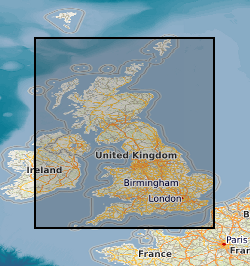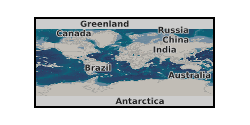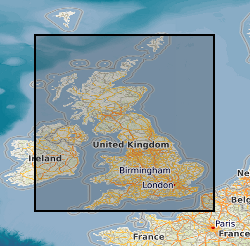Chalk
Type of resources
Topics
Keywords
Contact for the resource
Provided by
Years
Formats
Update frequencies
-

Field photographs of rock formations or modern precipitates from the sedimentary environment. Samples were collected throughout the UK. This data was collected between February 2019 and November 2019. This data was collected to better understand the low temperature cycling of Telurium (Te) and Sellenium (Se) in the geological environment. For example, a range of ochre samples were included in this data. Ochres are a modern precipitate commonly found in rivers and streams which flow through geographical areas with a history of mining resources which are rich in sulphides. Iron from the sulphides are leached out and deposited downstream, coating river and stream beds, giving a red, yellow or orange colouration. Ochres can be a sink for trace metals such as Te and Se, therefore studying these environments could be informative from a resource perspective but also from an environmental hazard perspective. This data would be useful for researchers who require reference photographs for similar studies or as an aid for resampling.
-

Dual stable isotope analysis comprising nitrogen-15 and oxygen-18 ratios for groundwater samples collected every 2-3 months over one hydrogeological year from the East Riding of Yorkshire. Isotopic ratios for nitrogen-15, oxygen-18 are both presented as raw and processed to NAIR and VSMOW, respectively. The data are in the form of a Microsoft Excel workbook containing Isotope Ratio Mass Spectrometer runs. The data were collected to understand key sources of nitrate contamination in Chalk groundwater and the dominant processes they undergo, and the extent of any attenuation. The Chalk catchments and the River Terrace Gravel catchment were compared, allowing conclusions to be drawn on the role of nitrate transformation, and the dominant location of transformations, to increase understanding of nitrate dynamics in agricultural systems. Groundwater samples were collected by the University of Leeds, the Environment Agency, Yorkshire Water and South East Water. Nitrate isolation and data interpretation carried out by Josephine McSherry, supervised by L. Jared West and Simon Bottrell. Mass spectrometry was carried out by Rob Newton and Bob Jamieson at the University of Leeds. No isotopic data are absent from the dataset, however oxygen contamination (resulting from the isolation method and since resolved) severely affected run O34b-O. Hydrochemical data relevant to the groundwater samples are not included as they are the property of the Environment Agency, Yorkshire Water or South East Water.
-

Mining hazard (not including coal) summarises the location, extent and indicates the level of hazard associated with former and present underground mine workings. The dataset covers Great Britain and is published at 1: 50 000 scale. The content is derived from a range of data sources including, but not limited to the bedrock geology, extensive literature reviews of both published and unpublished documents, abandonment and mine plans, combined with a wealth of expert knowledge and experience. The release of version 8 builds on the content of previously published versions. The coverage has been expanded with the inclusion of newly identified areas and drawing on data from the BGS published Britpits (BGS database of British Pits -includes both surface and underground mineral workings) and other resources. For the first time, zones of influence have been integrated (for evaporites, oil shales and building stones) to indicate the areas surrounding mining sites which might be impacted. The data have been compiled and presented in an easy to use format to provide a national overview of the country's mining legacy. Given the long and complex mining history of Great Britain, this dataset represents the best information available at the present time (September 2020). Work continues to develop this product, which will result in the release of ad hoc updates in the future.
 NERC Data Catalogue Service
NERC Data Catalogue Service